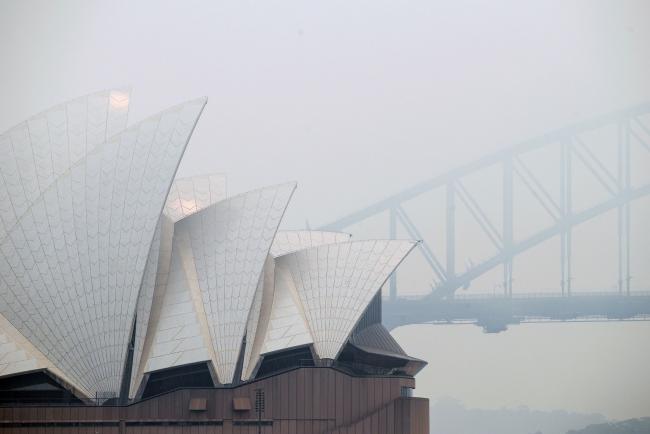(Bloomberg) -- Australia’s central bank validated the money market’s late swing, easing interest rates in an effort to cushion the blow from China’s economic slowdown and associated coronavirus fallout.
Reserve Bank Governor Philip Lowe reduced the cash rate by a quarter percentage point to 0.5%, a new record low, as expected by traders and predicted by half of the economists surveyed. Markets moved rapidly over the weekend following an escalation of contagion fear. At the close of business in Australia Friday, markets were pricing in just a 15% chance of a cut.
The outbreak “is having a significant effect on the Australian economy at present, particularly in the education and travel sectors. The uncertainty that it is creating is also likely to affect domestic spending,” Lowe said in a statement in Sydney announcing the decision. “The board is prepared to ease monetary policy further to support the Australian economy.”
The Australian dollar jumped 0.4% following the RBA decision and is currently trading at 65.54 U.S. cents at 2:38 p.m. Sydney.
The move means the RBA now has only one 25 basis-point cut left in the locker before it reaches the effective lower bound, opening the door to unconventional measures. It cut three times last year wagering that, together with tax rebates and a rebounding property market, households would resume spending.
From education to tourism to agriculture and resources, the viral epidemic will set back Australia. It is the most China-reliant economy in the developed world with about a third of its exports going there. The government in Canberra insisted that any fiscal response would be considered and targeted, contrasting it with the opposition’s cash splash of 2008-09.
Global policy makers have sought to reassure markets they are ready to respond to the epidemic as fears mount that the world economy is heading toward recession. The leaders of the International Monetary Fund and World Bank said they stood ready to help member nations, while Group of Seven finance ministers and monetary officials will speak by teleconference Tuesday.
“Policy measures have been announced in several countries, including China, which will help support growth,” Lowe said in the statement.
Upcoming data released this week in Australia are set to capture the blow from the wildfires that engulfed the country’s drought-parched east coast in December and January, before the virus delivers its follow-up hit.
Gross domestic product probably rose 0.4% in the final three months of 2019 from the prior quarter, and 2% from a year earlier, economists estimated ahead of data Wednesday.
“GDP growth in the March quarter is likely to be noticeably weaker than earlier expected,” Lowe said. “Given the evolving situation, it is difficult to predict how large and long-lasting the effect will be. Once the coronavirus is contained, the Australian economy is expected to return to an improving trend.”
One area helping Lowe is the currency, the economy’s traditional shock absorber that has depreciated almost 7% since the start of the year. The governor’s easing last year matched that of his Federal Reserve counterpart, helping ensure the Aussie dollar didn’t climb against the greenback.
